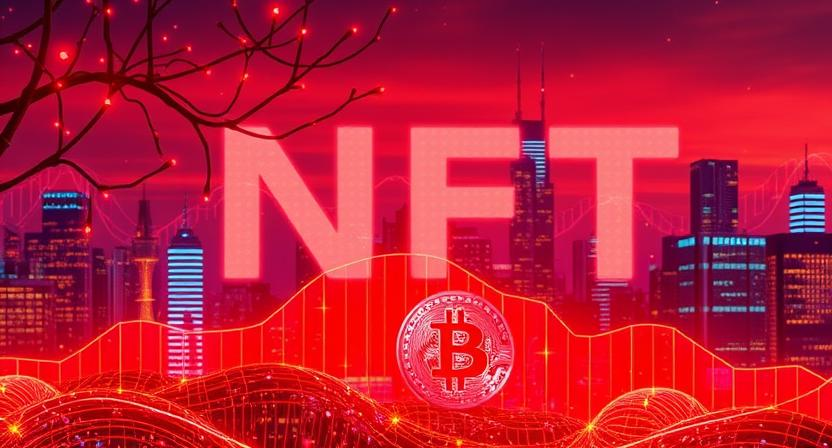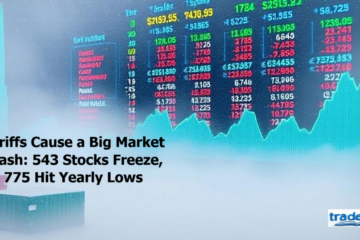The NFT (non-fungible token) market has experienced a significant downturn, with sales plummeting by 63% since December. Once hailed as the future of digital ownership and investment, NFTs have faced a dramatic drop in interest, volume, and valuation. However, amidst this downturn, AI-generated NFT collections have shown remarkable resilience, standing out as a beacon of hope for the industry. This article explores the reasons behind the NFT market crashes, the factors contributing to the success of AI-driven collections, and what the future holds for digital collectibles.
The NFT Market Decline: Analyzing the 63% Drop
1. Declining Trading Volume and Market Sentiment
NFTs witnessed unprecedented hype in 2021 and early 2022, with high-profile sales grabbing headlines. However, since December, NFT trading volumes have fallen sharply. Several factors contribute to this decline:
- Speculative Bubble Burst: The NFT market, much like the cryptocurrency sector, was heavily driven by speculation. As the initial euphoria faded, many investors pulled out, leading to declining prices and trading volume.
- Macroeconomic Conditions: The ongoing global economic downturn, interest rate hikes, and inflation have led investors to move away from riskier assets like NFTs.
- Loss of Consumer Trust: Several high-profile scams, rug pulls, and legal issues have eroded consumer confidence in the NFT space.
2. Major NFT Collections Losing Value
Notable NFT collections like Bored Ape Yacht Club (BAYC), CryptoPunks, and Azuki have experienced drastic drops in floor prices:
- BAYC, once selling for over $400,000 per ape, now sees prices below $100,000 in many cases.
- Azuki NFTs, after launching a controversial “Elementals” collection, lost trust among holders, causing a sharp price drop.
- The average transaction volume across top NFT marketplaces like OpenSea and Blur has decreased significantly.
3. Regulatory Crackdowns and Legal Challenges
Regulatory scrutiny has increased, particularly in the U.S., where the Securities and Exchange Commission (SEC) has been investigating whether NFTs qualify as securities. This uncertainty has pushed many investors and creators to tread cautiously.
4. Oversupply and Lack of Utility
The oversaturation of NFT projects, many of which lack real-world utility, has contributed to market fatigue. With thousands of new collections launching, the demand-supply balance has tilted unfavorably.
AI-Generated NFT Collections: A New Hope?
1. Why Are AI NFTs Holding Strong?
While the general NFT market is struggling, AI-generated NFTs are showing resilience. These collections leverage artificial intelligence to create unique, dynamic, and evolving art, providing a fresh appeal to collectors.
Key factors driving the success of AI NFTs:
- Innovative Artwork: AI-generated pieces often feature unique, unpredictable designs that captivate collectors.
- Dynamic and Evolving Nature: Some AI NFTs change over time, adapting based on external factors like blockchain activity or user interaction.
- Lower Entry Costs: AI NFTs are often more affordable than legacy NFT collections, attracting new buyers and maintaining market engagement.
- Support from the AI Boom: The rise of artificial intelligence technologies, including ChatGPT, Midjourney, and Stable Diffusion, has increased public interest in AI-generated content.
2. Successful AI NFT Collections
Several AI-driven NFT projects have managed to thrive despite the broader downturn:
- Autoglyphs by Larva Labs: One of the first AI-generated NFT collections, Autoglyphs have maintained strong value due to their innovative on-chain generative art.
- BrainDrops AI Art Collections: This platform has gained traction by featuring various AI-powered artists, showing consistent sales.
- Life in West America: This AI-generated storytelling NFT project has gained popularity due to its evolving narratives and artistic appeal.
3. AI NFTs vs. Traditional NFTs: A Market Comparison
| Feature | Traditional NFTs | AI-Generated NFTs |
|---|---|---|
| Artwork | Manually designed by artists | Created using machine learning algorithms |
| Rarity | Fixed traits, pre-determined supply | Evolving and dynamic traits |
| Market Sentiment | Declining | Increasing interest |
| Utility | Mostly status symbols or gaming assets | Interactive, evolving, and sometimes AI-assisted |
Future of the NFT Market: Can AI Sustain the Momentum?
1. The Path to Recovery for Traditional NFTs
Despite the current decline, NFTs are not entirely doomed. Several key developments could help the market recover:
- Enhanced Utility: The focus must shift from speculative flipping to real-world applications, such as gaming, virtual real estate, and digital identity.
- Regulatory Clarity: Clearer regulations could restore investor confidence by eliminating bad actors from the market.
- Improved Security: Reducing scams and rug pulls will help rebuild trust in the industry.
2. The Role of AI in the Future of NFTs
AI-driven NFTs are likely to play a major role in the next phase of NFT evolution. Some potential growth areas include:
- AI-Powered Smart Contracts: NFTs that evolve based on real-world data inputs.
- AI-Generated Personalized Art: Users could generate custom AI NFT artworks unique to their tastes.
- AI in Gaming and Virtual Worlds: AI-powered NFT assets that learn and adapt within gaming ecosystems.
3. Should Investors Consider AI NFTs?
While AI-driven NFTs appear promising, they still carry risks. Investors should:
- Research the technology behind the AI-generated collections.
- Avoid overhyped projects without strong fundamentals.
- Diversify investments to minimize exposure to market volatility.
Conclusion: NFTs Are Evolving, Not Dying
The NFT market’s 63% decline since December has signaled a major shift in the industry. The days of quick flips and speculative bubbles may be over, but the space is not dead. AI-generated NFTs have emerged as a resilient sector, offering a fresh take on digital ownership and artistic creation. As the market matures, NFTs must transition towards greater utility and innovation to sustain long-term growth. For investors and collectors, adapting to this changing landscape is key to navigating the future of digital assets.




